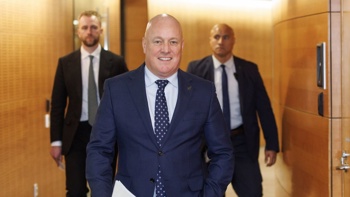UPDATED 6.40PM: The Hastings District Council's admitted it ignored recommendations to fix its Havelock North bores after another significant contamination event almost 20 years ago.
LISTEN ABOVE: Hawke's Bay reporter Annette Hilton was at the inquiry today and provides Rachel Smalley with a rundown of what was discussed.
The government’s inquiry panel into the contamination crisis, which struck down more than 5,000 people last August, is continuing in the Hastings District Court.
The hearing's heard that 80 people became sick after campylobacter got into Havelock North's water in 1998.
The council told the panel the bores are in the same condition today as they were in 1998.
Panel chair Lyn Stevens QC said it's the council's responsibility to ensure the bores are maintained.
"It is a bit odd that solemn recommendations are being made and not followed up, in fact ignored."
However, the Hastings District Council said it’s also been kept in the dark about widespread e-coli contamination near the Havelock North water bores.
The hearing has heard a Regional Council test bore, a few hundred metres away from the Havelock North bores, has a long history of high e-coli readings.
Hastings District Council water services manager, Brett Chapman said they were never told by the Regional Council about the e-coli problems.
"I wasn't aware that a state of the environment monitoring bore had e-coli readings in it," he told the inquiry panel.
There is hope the inquiry will shed some light on the cause of the contamination.
There are two different theories explaining how the water became contaminated: "One is that the bore was inundated with water," Hastings mayor Lawrence Yule explained.
"The other is that there was a direct contamination from the Mangateretere stream."
Yule said the inquiry will be the first time the different theories of how it happened will be publicly aired and cross-examined.
"The public should get a far better understanding of the situation and circumstances that led to the contamination," he said.
Part of the evidence given to the inquiry will be a report by a crisis management firm which examined the actions of the Hastings District Council during the contamination crisis.
The review conducted by former national director of Civil Defence John Hamilton commended the "swift" action of the council and the district health board.
"Together the two authorities responded to the indications of the outbreak at a pace that would be difficult to better."
However, he said there was room for improvement and declaring a local state of emergency would have "added impetus" to the response messages and ramped up the provision of welfare support.
The institutional cost of last year's epidemic so far exceeds $2.7 million.
Take your Radio, Podcasts and Music with you









